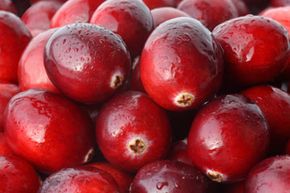If you're a 21st century American, you may have never eaten fresh blueberries or blackberries that didn't come in a cardboard tray from a supermarket. Depending on the season, those store-bought berries may have grown shrouded in plastic on a gigantic factory farm or were shipped thousands of miles from Chile or Mexico [sources: Orzolek, Vivian]. Or maybe you've eaten frozen strawberries -- the ones that have been genetically altered with a cold-tolerance gene from Atlantic flounder [source: Brody].
Chances are the last thing you'd do is go out into the woods and eat wild berries that you picked from a bush. Perhaps you have Cub Scout memories of a nature hike during which a den mother hastily perused the poison section in her first-aid manual. "If you see any wild berries," she implored you, "don't pick them and don't eat them because they could make you sick or even kill you."
Advertisement
OK -- she wasn't completely wrong. Some wild berries are dangerous to eat. But plenty of others are not only safe, but delicious and good for you, whether you eat them fresh, cook them in pies or make preserves. Varieties of edible wild berries -- blackberries, raspberries, cranberries and others -- grow all over the North American continent. The trick is knowing which are safe to eat [source: Vaughr].
Summer is probably the best time to find edible berries, though you can find some in the spring and fall, and you can find cranberries in the winter [source: Elias]. Make your first few excursions under the watchful eye an experienced berry-picker from your area. He or she will know where to look, what to look for and what's safe to eat. You also should equip yourself with a copy of a reputable guidebook, such as botanists Thomas Elias' and Peter Dykeman's "Wild Plants, A North American Field Guide" [source: Vivian].
Some basic safety rules: Positively identify any wild fruit before you pick or eat it. Remember that just because animals eat it doesn't mean that it's safe for humans. Avoid areas with a lot of dead vegetation -- it may have been sprayed with herbicides. Be sure to make enough noise to let bears, who also are berry enthusiasts, know you're around [source: Vivian].
Advertisement




